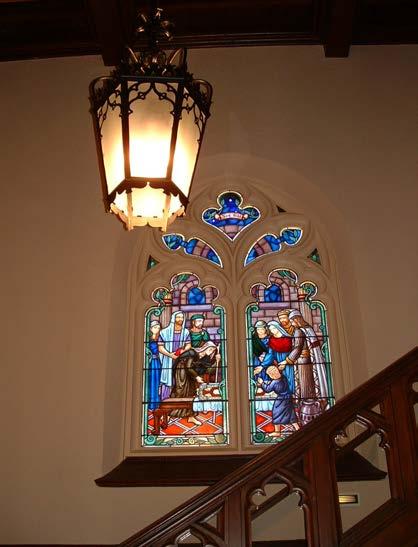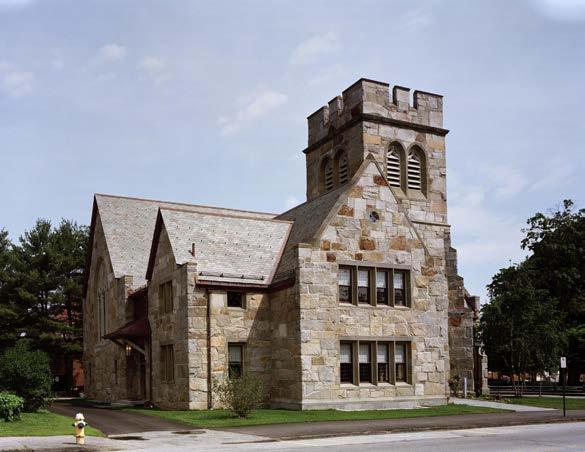
2 minute read
HISTORIC RESTORATION & ADDITION
Phillips Church, Phillips Exeter Academy: Exeter, NH
The program for Phillips Church included the restoration of all the exterior surfaces; slate roof, leaded glass windows, 8” granite bearing walls and oak doors with their wrought iron hardware, all extant, as designed by famed architects Ralph Adams Cram and Bertram Grosvenor Goodhue in 1893. The interior was also to be restored and readied for the next one hundred years; the stated goal of the restoration effort. Alterations would also correct fire and egress problems such as the lack of a fire stair to the second floor, need for sprinklers, lack of an accessible elevator, and the absence of air conditioning. Existing stained glass was removed, cleaned and reinstalled and a new window designer was selected through a national competition. Program needs identified by a faculty and staff committee were ambitious. They included changing and up dating the mission of the ministry to adapt to the current multi-cultural student body. The renovated Phillips Church hosts twelve religious traditions including Christian, Muslim, Jewish, Hindu, Quaker, Buddhist, Catholic among others.
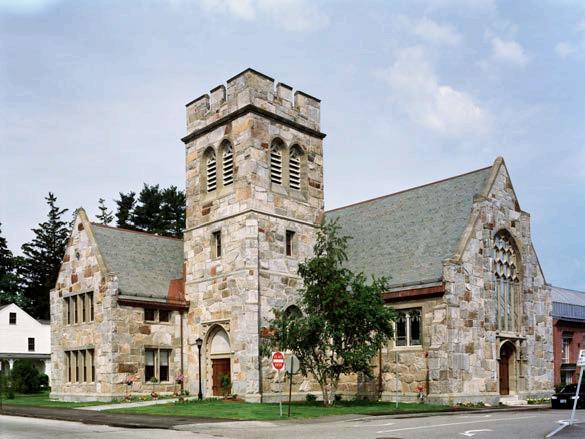
In every sense, the programmatic requirement was that the new Phillips Church express the far-reaching and fundamental religious and spiritual changes the Academy has undergone in the last generation. To accommodate the new ministry at Exeter, Phillips Church would be modified to welcome and provide for diversity and change, yet remain familiar to the returning alum. Phillips Church was to remain the timeless spiritual center of the school it has always been while changing quietly to accommodate everyone and provide for diversity and change, yet remain familiar to the returning alum. Phillips Church was to remain the timeless spiritual center of the school it has always been while changing quietly to accommodate everyone.
Features of the Restoration and Alterations:
Existing unattractive basement space was reformed to host student religious activities and transformed into a welcoming home-like atmosphere that would attract students and make them feel welcome. The ceiling was raised slightly and window wells added to give a sense of expansion and to bring light into the dark.
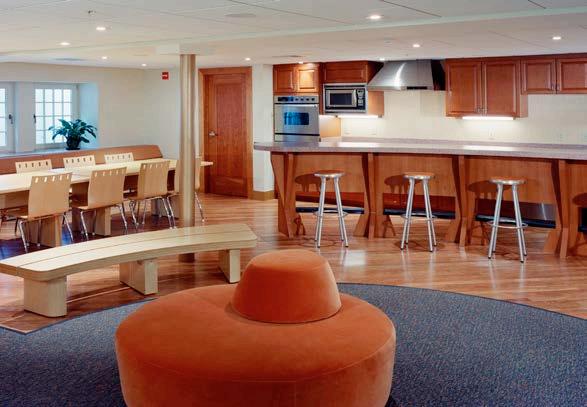
The new fire stair connects the basement visibly with the other floors, serving as critical, quiet circulation from the basement “ready space’ to the performance space above in the nave. A skylight illuminates the new stair, bringing light all the way down into the basement and masking necessary vent stacks for the new air conditioning system.
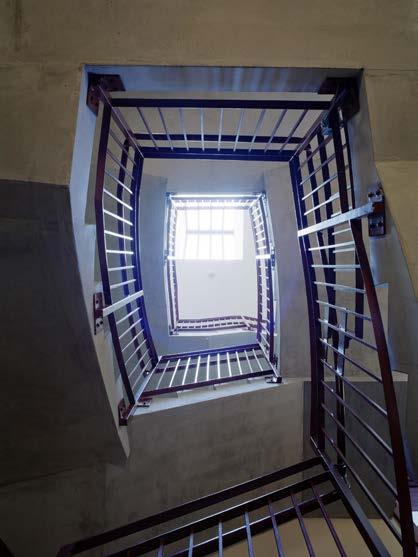
The nave, which serves as the school’s musical performance space, was re-fitted with state of the art sound recording facilities, the floor was reinforced and a 3” sandwich of concrete and granite tile added to improve the sound response of the room. Pews were removed and flexible gang-able pew-chairs were custom designed and manufactured. Existing woodwork was modified to allow a concert grand piano to be stored inside the organ chamber and a de-mountable, stackable floor system designed and custom manufactured to allow flexible use of the room by extending or raising the thrust stage. New theatre lighting was designed and a lighting control system installed to support concert performances by groups from a single performer to the full Academy symphony orchestra. Extendable choir platforms replaced the existing inflexible stands that had been fixed into the chancel woodwork.
On the upper level, the Wicks Room, traditionally a quiet meeting room for students, houses the Muslim, Jewish and Buddhist worship spaces and the adjacent library is designed to provide supporting literature for all the various traditions worshipping in Phillips Church. It also is the location of weekly African drumming sessions on Thursday evenings.
Throughout, gothic wrought iron light fixtures and hardware were restored and, where necessary, new hardware was crafted by hand to match the old. A new third egress was added to bring the facility up to current fire code and the new door, roof, brackets and hardware designed to harmonize with the existing without imitating it.
Modern requirements were carefully met by making careful and respectful adjustments to a beloved masterpiece so that both current students and returning alums will continue to enjoy this cherished part of the campus for another hundred years.
